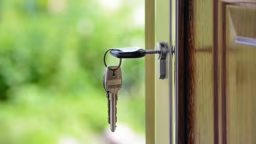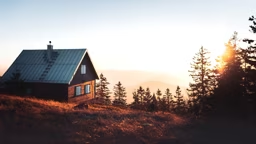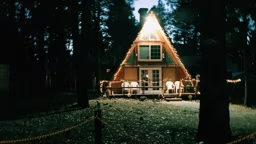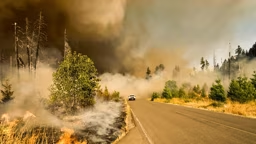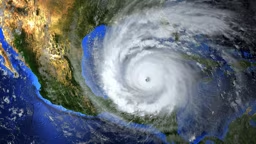By Mother’s Day, 1988, the snow was a week gone. Wild peas, fiddlehead ferns and trout lilies were emerging in the woods around Lake Vermilion in northern Minnesota. It was late afternoon, and my wife and I were opening the cabin – I outside connecting the hose to the water storage tank, my wife inside cleaning.
It was hot, dry and very windy.
I smelled fire and then saw a plume winding out across the water from the mainland seven miles away. Deep in the smoke I could see the fire’s angry raging glow, a giant’s version of the “snakes” we kids played with on the Fourth of July – little black tablets which glowed red, sending up a twisting tube of ash like a snake rising out of an infernal hole.
Soon islands in the middle of the lake were obscured. The sun became a dull orange globe in a black sky. Our eyes watered, noses ran, throats burned.
We tracked the fire’s progress with a compass and map: 10 miles in 20 minutes. Tongues of flame twisted hundreds of feet into the air. We could even hear the roar across the water.
Tanker planes and helicopters swirled ineffectually around the fire like bees worrying a bear at a hive.
The fire drew closer to the little town of 500 souls where my cousins lived, and then, when it looked like the fire was just at the edge of town, the town’s lights blinked out. The fire burned on.
But then the temperature dropped – and rain fell. The fire sat down.
The town was saved by providence, not firefighters.
The late 1980s was the beginning of a new era in forest fires – the unstoppable catastrophic fire. It is not a matter of “if” but of “when” one of these small rural communities will be burned over.
Interruption of the Wildfire Cycle
Historically, fire was always a fact of forests, grasslands and savannah.
In addition to fires caused by lightning strikes, fires set by tribes of Native Americans largely shaped and created the landscapes we have come to love and regard as “wild.” Much of the pine forests, grasslands, prairies – even the redwood and Douglas fir forests in the Pacific Northwest – were formed and maintained by regimens of tribal fires. Much of the landscape of the United States was not so much a “steady state ecosystem” in balance with itself, but a cultural artifact when Europeans arrived. When people began putting out fires, they interrupted these ancient regimens.
In the late 1800s, wildfires began to bump up against civilization. On the same day as the Great Chicago fire in 1871, the Peshtigo fire in Wisconsin killed 1,200 people, the worst natural disaster in our history until Hurricane Katrina. The Hinckley Fire, 1894, in Minnesota claimed 800 souls. And the biggest forest fire in U.S. history, 1910’s Big Blowup in Idaho and Montana, took 86 lives and burned 3 million acres.
That year, the fledgling United States Forest Service began an aggressive policy of fire suppression, trying to have every fire out by 10 a.m. on the morning following its report. And for years they were successful.
It was hot, dry and very windy.
I smelled fire and then saw a plume winding out across the water from the mainland seven miles away. Deep in the smoke I could see the fire’s angry raging glow, a giant’s version of the “snakes” we kids played with on the Fourth of July – little black tablets which glowed red, sending up a twisting tube of ash like a snake rising out of an infernal hole.
Soon islands in the middle of the lake were obscured. The sun became a dull orange globe in a black sky. Our eyes watered, noses ran, throats burned.
We tracked the fire’s progress with a compass and map: 10 miles in 20 minutes. Tongues of flame twisted hundreds of feet into the air. We could even hear the roar across the water.
Tanker planes and helicopters swirled ineffectually around the fire like bees worrying a bear at a hive.
The fire drew closer to the little town of 500 souls where my cousins lived, and then, when it looked like the fire was just at the edge of town, the town’s lights blinked out. The fire burned on.
But then the temperature dropped – and rain fell. The fire sat down.
The town was saved by providence, not firefighters.
The late 1980s was the beginning of a new era in forest fires – the unstoppable catastrophic fire. It is not a matter of “if” but of “when” one of these small rural communities will be burned over.
Interruption of the Wildfire Cycle
Historically, fire was always a fact of forests, grasslands and savannah.
In addition to fires caused by lightning strikes, fires set by tribes of Native Americans largely shaped and created the landscapes we have come to love and regard as “wild.” Much of the pine forests, grasslands, prairies – even the redwood and Douglas fir forests in the Pacific Northwest – were formed and maintained by regimens of tribal fires. Much of the landscape of the United States was not so much a “steady state ecosystem” in balance with itself, but a cultural artifact when Europeans arrived. When people began putting out fires, they interrupted these ancient regimens.
In the late 1800s, wildfires began to bump up against civilization. On the same day as the Great Chicago fire in 1871, the Peshtigo fire in Wisconsin killed 1,200 people, the worst natural disaster in our history until Hurricane Katrina. The Hinckley Fire, 1894, in Minnesota claimed 800 souls. And the biggest forest fire in U.S. history, 1910’s Big Blowup in Idaho and Montana, took 86 lives and burned 3 million acres.
That year, the fledgling United States Forest Service began an aggressive policy of fire suppression, trying to have every fire out by 10 a.m. on the morning following its report. And for years they were successful.
Why Today’s Fires Are So Catastrophic
The catastrophic fires we see ripping across landscapes today bear little resemblance to the fires the Native Americans set. Today, we snuff each spark until there comes a day that is so hot, so dry and so windy – like Mother’s Day 1988 – that the spark gets away from us. Today, fires burn only under the very worst conditions.
In addition, the forests are different. Fire prefers younger forests. It is a concept as simple as the fact that if you throw a big round log on a fire, the fire smothers. Split that log into sticks, and it blazes. After 200 years of logging, we now have millions of acres of sticks.
Even in what’s left of the old forests, young trees have grown up under the over-story, creating a “ladder” that carries flame up to the crown. In the past, smoldering ground fires would have cleared out these trees while they were still seedlings.
Fire scientists refer to these young trees as “fuel load.” In many places the fuel load in the forests is 10 or 20 times higher than historical levels. The United States is facing a crisis of fuel with more than 139,000 square miles of land –
an area larger than the state of Colorado – at risk of extreme fires.
“Fire is inevitable,” says Jack Cohen at the National Fire Sciences Lab in Missoula, Mont. “It is like rain. It just has a longer frequency interval.”
And with fuel loads at maximum, the inevitable fires are becoming incredibly destructive.
Wildfire and People on a Collision Course
Not only has the amount of fuel in the forests risen dramatically in recent years, so have the number of homes and people. Of the 10 fastest growing cities in the U.S., eight are in the interior West, with much of the development occurring in fire-prone areas or what fire managers call the Wildland/Urban Interface. Wildfire and people are on a disastrous collision course.
The solution, obviously, is to remove the fuels, which is not as easy as it might seem. There is simply too much to log. And the high-value trees preferred by industry (the old growth) do not represent a fuel load problem.
Also, there is little market for the younger, smaller trees. Even if there was, the amount of logging required would flood the market, destroying prices.
The solution to reducing fuel load is to burn it, but under controlled conditions.
Prescribed fire, done when the temperature is lower, humidity higher, winds lighter, can effectively remove the fire danger. In fact, the Hayman fire, which burned southwest of Denver in 2002, would have roared into the suburbs, but was slowed by a prescribed burn done a few years earlier. Fire Chief Don Angell in Fairmont, Colo., put it simply: “Better the fire you expect than the one you don’t.”
But public opinion often runs against prescribed burns.
The catastrophic fires we see ripping across landscapes today bear little resemblance to the fires the Native Americans set. Today, we snuff each spark until there comes a day that is so hot, so dry and so windy – like Mother’s Day 1988 – that the spark gets away from us. Today, fires burn only under the very worst conditions.
In addition, the forests are different. Fire prefers younger forests. It is a concept as simple as the fact that if you throw a big round log on a fire, the fire smothers. Split that log into sticks, and it blazes. After 200 years of logging, we now have millions of acres of sticks.
Even in what’s left of the old forests, young trees have grown up under the over-story, creating a “ladder” that carries flame up to the crown. In the past, smoldering ground fires would have cleared out these trees while they were still seedlings.
Fire scientists refer to these young trees as “fuel load.” In many places the fuel load in the forests is 10 or 20 times higher than historical levels. The United States is facing a crisis of fuel with more than 139,000 square miles of land –
an area larger than the state of Colorado – at risk of extreme fires.
“Fire is inevitable,” says Jack Cohen at the National Fire Sciences Lab in Missoula, Mont. “It is like rain. It just has a longer frequency interval.”
And with fuel loads at maximum, the inevitable fires are becoming incredibly destructive.
Wildfire and People on a Collision Course
Not only has the amount of fuel in the forests risen dramatically in recent years, so have the number of homes and people. Of the 10 fastest growing cities in the U.S., eight are in the interior West, with much of the development occurring in fire-prone areas or what fire managers call the Wildland/Urban Interface. Wildfire and people are on a disastrous collision course.
The solution, obviously, is to remove the fuels, which is not as easy as it might seem. There is simply too much to log. And the high-value trees preferred by industry (the old growth) do not represent a fuel load problem.
Also, there is little market for the younger, smaller trees. Even if there was, the amount of logging required would flood the market, destroying prices.
The solution to reducing fuel load is to burn it, but under controlled conditions.
Prescribed fire, done when the temperature is lower, humidity higher, winds lighter, can effectively remove the fire danger. In fact, the Hayman fire, which burned southwest of Denver in 2002, would have roared into the suburbs, but was slowed by a prescribed burn done a few years earlier. Fire Chief Don Angell in Fairmont, Colo., put it simply: “Better the fire you expect than the one you don’t.”
But public opinion often runs against prescribed burns.
Rate Your Cabin’s Fire Safety
? Is your roof made of non-flammable materials? Recommended are Class A materials such as clay, concrete or metal tile, or fiberglass composition shakes.
? Do you have a 30-foot defensible zone around your cabin and its attachments, including decks and fencing? A defensible zone means all ignitable substances (such as wood piles, dead leaves, brush piles, flammable vegetation) are removed.
? Have you managed the vegetation in the 100-200 feet surrounding your cabin? This is your Home Ignition Zone. By reducing fuel load here you can reduce the intensity of an approaching fire. Thin your trees, particularly coniferous ones (with needles). Trim the lowest tree limbs 6-10 feet off the ground.
? Do you have screens over every opening into your cabin? This would include all vents and skylights, in addition to windows. Screens prevent burning embers from entering the structure.
? Is your cabin accessible to fire crews? Roads and driveways should be wide enough to accommodate emergency vehicles, and there should be a turn-around at the end of your drive.
? Do you have a wildfire sprinkler/ suppression system?
Visit www.firewise.org to get more information.
? Is your roof made of non-flammable materials? Recommended are Class A materials such as clay, concrete or metal tile, or fiberglass composition shakes.
? Do you have a 30-foot defensible zone around your cabin and its attachments, including decks and fencing? A defensible zone means all ignitable substances (such as wood piles, dead leaves, brush piles, flammable vegetation) are removed.
? Have you managed the vegetation in the 100-200 feet surrounding your cabin? This is your Home Ignition Zone. By reducing fuel load here you can reduce the intensity of an approaching fire. Thin your trees, particularly coniferous ones (with needles). Trim the lowest tree limbs 6-10 feet off the ground.
? Do you have screens over every opening into your cabin? This would include all vents and skylights, in addition to windows. Screens prevent burning embers from entering the structure.
? Is your cabin accessible to fire crews? Roads and driveways should be wide enough to accommodate emergency vehicles, and there should be a turn-around at the end of your drive.
? Do you have a wildfire sprinkler/ suppression system?
Visit www.firewise.org to get more information.
Analysis of a Wall of Flame
Perhaps the general public would be more supportive and become more active in fire prevention if they understood how wildfires burn, says Cohen.
What we see when we watch the catastrophic wildfires on the nightly news is a wall of flame. But what is actually happening is a rapid series of ignitions, like one match in a matchbook lighting off the match next to it, and the next, and the next and so forth.
Interrupt this cycle of ignitions, says Cohen, and you stop the fire. And the place you can interrupt this series is around your cabin.
Fireproofing Your Property
Choices the homeowner makes can very effectively fireproof a home, even if firefighters never reach it. We have all seen pictures of the “miracle houses” sitting unscathed in the midst of a leveled forest or subdivision. According to Cohen, there is no miracle. The homes did not burn because the ignition cycle was interrupted before the fire reached them.
How does that happen?
Pretend that you want to light a campfire, and look around the outside of your place for kindling. If you find kindling within a 30-foot radius of your cabin, you have a problem. The intense heat of a crown fire lasts just 50 seconds, but if the flames stay at least 30 feet from a structure it will most likely not ignite.
So search the 30-foot radius around your cabin and clear back the flammable trees and shrubs. Trim lower branches. Remove woodpiles from under your deck and around your propane tank. Is there a broom leaning against the back door jamb, a raffia wreath hanging on the door, a cedar-shingled roof? These are all sources of ignition.
Visit www.firewise.org to get more information.
If you call the Forest Service office nearest your cabin, ranch or lakehome, firefighters can give you a very good assessment of your property. And you may even get help with the cost of installing a rooftop sprinkler system. They will issue you a certificate that might help you lower your insurance premiums and put your house at the top of the protection list when fire does come.
What Else You Can Do
You can also try to accept prescribed burns as natural, and lobby to have them, as needed, on the wild lands surrounding your property.
There seems to be a political bias against lighting prescribed burns to treat fuel load problems. Yet once a wildfire starts, there is no cap on costs; Congress simply writes a check to cover expenses.
One problem is that prescribed burns must come out of already thin budgets. In addition, there are long environmental impact hearings held in advance of prescribed burns, and there’s often strong public opposition. People worry that fire will destroy the scenery, harm animals, trash watersheds. They do not like the smoke, or the closing of roads, campsites and trails.
But fire is inevitable. And a knowledgeable public can help change trends.
The forests will eventually burn. And Chief Don Angell’s statement that “better the fire you expect than the one you don’t” becomes particularly pertinent. Once the public understands the benefits of prescribed burns, they will see that the benefits far outweigh the risks, particularly for those who have homes in the woods.
Jeff Forester, author of the book,“Forest for the Trees: How Humans Shaped the Northwoods,” is writing a feature-length screenplay based on the book.
Perhaps the general public would be more supportive and become more active in fire prevention if they understood how wildfires burn, says Cohen.
What we see when we watch the catastrophic wildfires on the nightly news is a wall of flame. But what is actually happening is a rapid series of ignitions, like one match in a matchbook lighting off the match next to it, and the next, and the next and so forth.
Interrupt this cycle of ignitions, says Cohen, and you stop the fire. And the place you can interrupt this series is around your cabin.
Fireproofing Your Property
Choices the homeowner makes can very effectively fireproof a home, even if firefighters never reach it. We have all seen pictures of the “miracle houses” sitting unscathed in the midst of a leveled forest or subdivision. According to Cohen, there is no miracle. The homes did not burn because the ignition cycle was interrupted before the fire reached them.
How does that happen?
Pretend that you want to light a campfire, and look around the outside of your place for kindling. If you find kindling within a 30-foot radius of your cabin, you have a problem. The intense heat of a crown fire lasts just 50 seconds, but if the flames stay at least 30 feet from a structure it will most likely not ignite.
So search the 30-foot radius around your cabin and clear back the flammable trees and shrubs. Trim lower branches. Remove woodpiles from under your deck and around your propane tank. Is there a broom leaning against the back door jamb, a raffia wreath hanging on the door, a cedar-shingled roof? These are all sources of ignition.
Visit www.firewise.org to get more information.
If you call the Forest Service office nearest your cabin, ranch or lakehome, firefighters can give you a very good assessment of your property. And you may even get help with the cost of installing a rooftop sprinkler system. They will issue you a certificate that might help you lower your insurance premiums and put your house at the top of the protection list when fire does come.
What Else You Can Do
You can also try to accept prescribed burns as natural, and lobby to have them, as needed, on the wild lands surrounding your property.
There seems to be a political bias against lighting prescribed burns to treat fuel load problems. Yet once a wildfire starts, there is no cap on costs; Congress simply writes a check to cover expenses.
One problem is that prescribed burns must come out of already thin budgets. In addition, there are long environmental impact hearings held in advance of prescribed burns, and there’s often strong public opposition. People worry that fire will destroy the scenery, harm animals, trash watersheds. They do not like the smoke, or the closing of roads, campsites and trails.
But fire is inevitable. And a knowledgeable public can help change trends.
The forests will eventually burn. And Chief Don Angell’s statement that “better the fire you expect than the one you don’t” becomes particularly pertinent. Once the public understands the benefits of prescribed burns, they will see that the benefits far outweigh the risks, particularly for those who have homes in the woods.
Jeff Forester, author of the book,“Forest for the Trees: How Humans Shaped the Northwoods,” is writing a feature-length screenplay based on the book.
Did you know?
If your cabin is located at the top of a hill, it may be more susceptible to burning. Fire preheats fuel in its path; consequently a fire burning upslope travels faster than a fire backing down a slope. South-facing slopes also dry faster than others, causing a fire to burn with more intensity.
If your cabin is located at the top of a hill, it may be more susceptible to burning. Fire preheats fuel in its path; consequently a fire burning upslope travels faster than a fire backing down a slope. South-facing slopes also dry faster than others, causing a fire to burn with more intensity.
 Matt Ragen
Matt Ragen 





